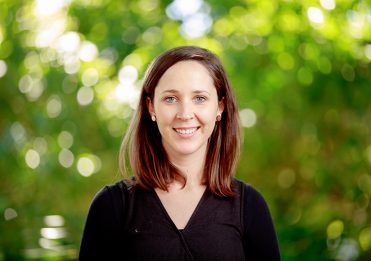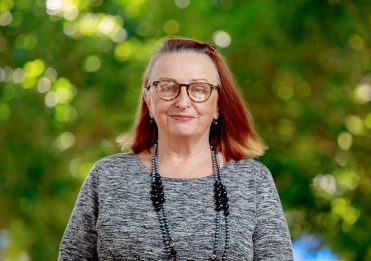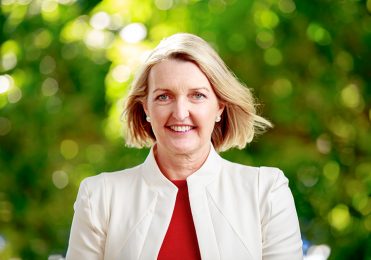Dr Bruce Addison, Deputy Principal (Academic)
Originally published Friday May 12 2017
I must admit that when I sat down to write this article many potential themes emerged. Slow learning was one. Trust another. Deconstructing the simplistic analysis associated with national and international benchmarking was tempting. These themes are important to me but this time I wanted to write on a topic that is fundamental to my daily work. To me the magically affective space existing between teacher, student and learning is something worthy to explore, recognise and celebrate. Educational theorist, Max van Manen has done much work in this field. To him the relational space existing between teacher and student forms the essence of his concept of pedagogy. For van Manen a pedagogical relationship requires a teacher to possess:
… a sense of vocation, moral fibre, a loving and caring disposition, a sense of responsibility, intuition, a passion for knowledge, tactful sensitivity, humour, vitality and hope, maturity, an ability to be self-critical and interpretative intelligence (1991;256).
Some scholars refer to the above as pedagogical love (Hatt, 2005). Learning is a slow process. It needs relationship, trust and commitment for it to grow and develop into something meaningful and transformative. It is in such a space that rich, robust and genuine life-long learning emerges, a concept of learning so important to the continued development of our civil society.
In the midst of my musing the thoughts of one of my educational heroes, Parker Palmer, resonated deeply. His writing always nourishes me particularly when issues such as benchmarking and negative media commentary spike. After all, what we do year in and year out in our classrooms transcends transient political comment and expediency. Palmer has written much about the affective space I alluded to earlier. He notes:
…good teaching is akin to weaving a fabric of connectedness between student, teacher and subject. The teacher is the loom on which the fabric is woven (2007; 11).
Some educational theorists would disagree passionately about his depiction of the teacher as ‘loom’. It sits very comfortably with me, as a ‘loom’ is a conduit of creative endeavour. After all, nothing can be more creative and sustaining than learning. If the teacher is the ‘loom’, who then are the weavers? Without doubt, it is a combination of the student, the learning process as well as the home. The creation of a fabric of teaching and learning is impossible without the creative teacher-student relationship. It requires a cultivation of the profound simpatico through which teachers and students ‘see, think and wonder’ (Ritchhart, Church & Morrison, 2011) in order to create knowledge. Knowledge acquisition is so very different from information retrieval or simplistic conclusion based on information bombardment. The former requires great skill and patience while the latter is transitory and disposable. In today’s world, knowledge and information are so often conflated—they should not be!
Accumulated knowledge and its journeyman wisdom, takes many years to acquire. So often, it starts with storytelling and the ability to decipher meaning from fable and metaphor. This happens in the home from early childhood and is hopefully explored at School with growing levels of nuance and sophistication. It requires time and skill for themes to connect and wonder to weave its magic. It takes patience and perseverance to foster an intelligent desire to discern in the face of misinformation and propaganda. Who would have thought that ‘post-truth’ would have been 2016’s word of the year? If there is such a thing as ‘post-truth’, let alone a word, the creation of knowledge and a populace capable of understanding reason from rhetoric could not be more important. If the teacher is the ‘loom’ facilitating such a creative endeavour, then what a privileged position we have as teachers.
It appears that the seemingly disparate themes I started with had a purpose. They helped me to discern something noble about our profession and the great hope for tomorrow—the knowledge base of our students. May the creative endeavour of thoughtful knowledge acquisition, founded on the powerfully affective space existing between teacher, student and subject, inform our concept of a broad-based liberal education for many years. Our planet and all living things deserve nothing less. A few years ago, I wrote a series of poems based on Parker Palmer’s writing. Below is one entitled: The Fabric of Teaching.
The Fabric of Teaching
May the fabric
of our teaching
embrace every student
with warmth.
May its ‘cut’ be generous
and its ‘feel’ safe
in the
knowledge of
truth, care
and trust.
May it enwrap
young minds
with tenderness
and generosity,
enabling knowledge
to flourish
individually.
May its fibres comfort
and support,
filling our community
with a
truthful and sustaining
understanding.
May we who teach
entrust the spirit of
learning to
guide and support
us as we
nurture all those
in our care.
Written as a reflection based on The Fabric of Teacher in Parker Palmer ‘The Courage to Teach’.
Read Deputy Principal (Academic), Dr Bruce Addison’s reflective commentary on his piece, ‘Looms and weavers: teaching and the creation of knowledge and wisdom’.
When reflecting on these words, ‘the magically affective space existing between teacher, student and learning’ it became apparent very quickly that this is what sustains me as a teacher, especially during this incredibly complex period of educational change. In many respects this ‘magically affective space’ is a profoundly liminal space where minds meet in the knowledge of potential transformation. It is a deeply unpredictable space in which learning occurs or insight is achieved often at the most incongruous times. This type of transformation cannot be captured by leagues tables or by those who are transfixed by measurement.
There are those who would assert that the role of the teacher has or will become superseded by the speed and enormity of the digital revolution. This is a mistaken belief having the potential to do much damage to our concept of civility. Of course, technology is fundamental to our concept of 21st century living; in many respects it is now very much a need and no longer a want. Even so, it must be remembered that learning, as with slow cooking, needs careful preparation and time for the various flavours to meld—flavours that will eventually become discernible knowledge. Knowledge is much more than knowing stuff. It takes time to develop. Our current political discourse is a testament to what can happen when discernment is overtaken by instantaneity or expedience.
Teachers and parents have an enormous role to play in this phenomenon we call learning. Professor Art Costa’s (2008) belief that schools are ‘Homes for the Mind’ provides a very useful space in which to consider relational pedagogy. The metaphor is beautiful. From it can be extracted the essence of learning. All good homes are based on caring, nurturing and sustainable relationships. It is the most fundamental pedagogy imaginable. If we can distil this goodness in our classrooms and all of our endeavours we have the possibility of creating schools that are caring, intellectually dynamic and extraordinary.
Teachers are ideas professionals. It is timely to reflect on past thinking in order to recast belief. Sometimes this thinking is just so fundamental that it is nothing but foundational. Re-reading this article has been good for me. 2019 is an amazingly complex space in which we are finishing the OP system whilst introducing the QCE/ATAR model. Reflecting on fundamentals is nourishment for the soul. As ever the thoughts of one of my educational heroes, Parker Palmer, is a good place to conclude. Palmer (2007) summarises the pedagogical relationship eloquently:
‘…my gift as a teacher is the ability to dance with my students, to co-create with them in a context in which all of us can teach and learn and that this gift works as long as I stay open and trusting and hopeful about who my students are’ (p. 75).
Sources
Costa, A. (2008). The School as a Home for the Mind: Creating Mindful Curriculum, Instruction and Dialogue, Corwin: Thousand Oaks.
Palmer, P. (2007). The Courage to Teach: Exploring of the Inner Life of Teachers, Josey-Bass: San Francisco.




